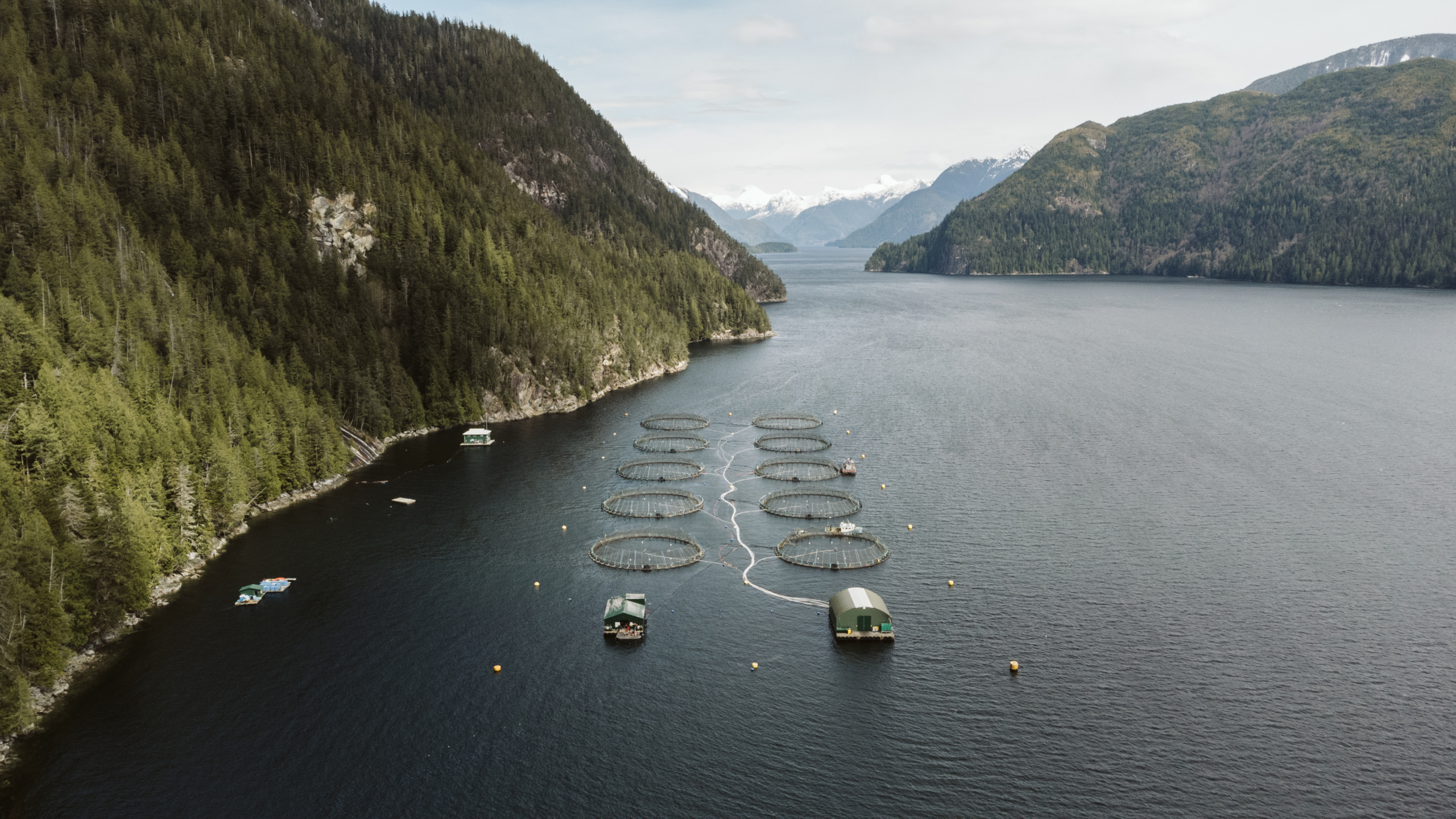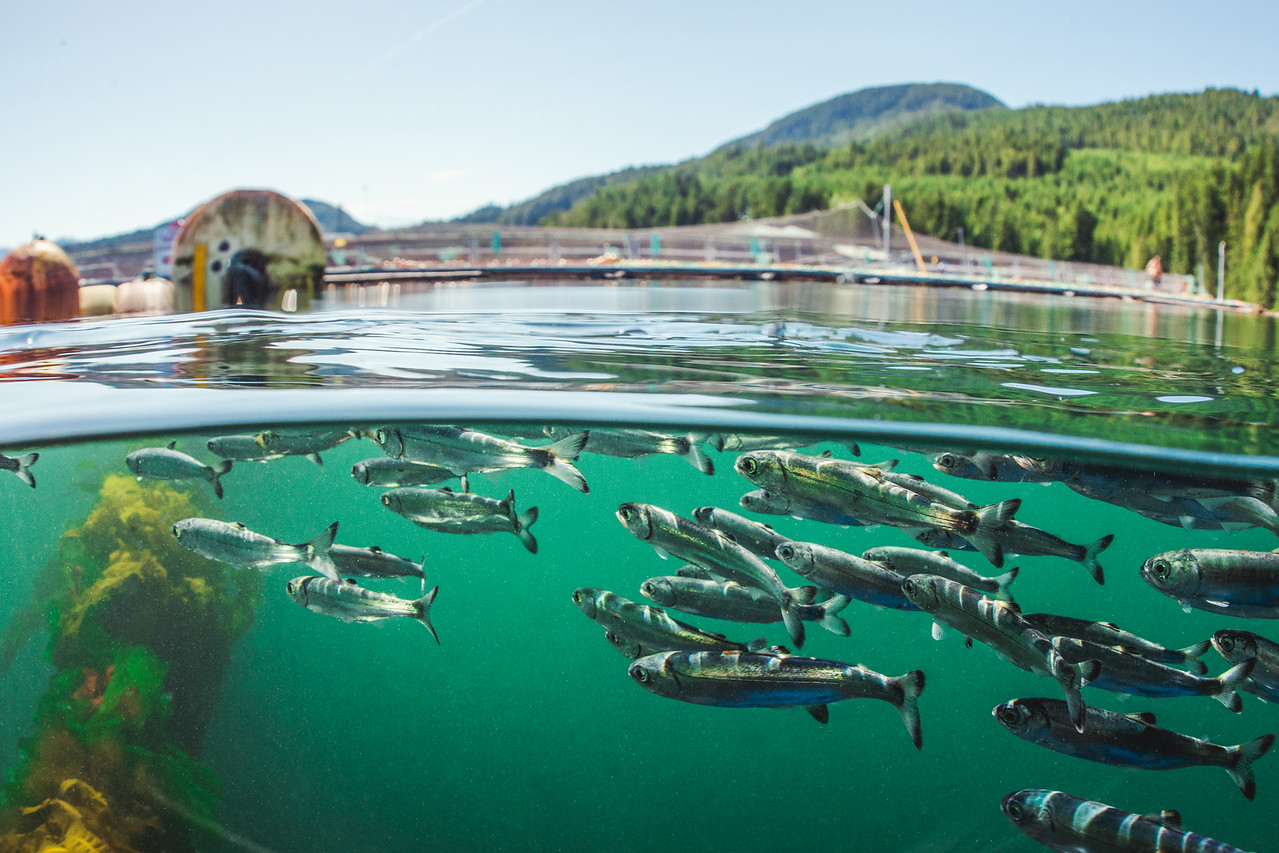Peer-reviewed research: Pathogen threats from salmon aquaculture to wild Pacific salmon conservation in B.C.
A new scientific review highlights significant concerns regarding the spread of pathogens from farmed salmon to wild Pacific salmon populations in British Columbia.
The peer-reviewed summary, titled ‘Pathogens from salmon aquaculture in relation to conservation of wild Pacific salmon in Canada’, was published in Science Advances, a leading scientific journal, as part of a special issue focused on aquaculture. This review paper specifically focuses on the pathogen and parasite interactions to which wild Pacific salmon are exposed in the presence of open-net pen salmon farms.
In southern B.C., many wild salmon populations, which are already facing climate change, habitat degradation, and other challenges, are exposed to pathogens from aquaculture when they migrate through areas with intensive Atlantic salmon farming.
The sheer number (nearly a million) and density of fish in an open-net salmon farm present ideal conditions for the growth and spread of pathogens such as bacteria, viruses, and parasites. This creates a new source of transmission from farmed to wild salmon that would not otherwise occur. In recent years, more than 50 per cent of open-net pens in B.C. have closed down to reduce risks to wild Pacific salmon, but farms still exist along numerous wild salmon migration routes.

Open-net pen salmon farms in the Broughton Archipelago in 2022. Photo: Brandon Deepwell
This new review in Science Advances, co-authored by staff and collaborators of the Pacific Salmon Foundation (PSF), is the latest addition to a collection of peer-reviewed articles linking open-net pen aquaculture to risks for wild Pacific salmon.
“This work synthesizes research from more than 20 years that has shown clear signals: salmon farms can elevate levels of parasites and pathogens that we have very good reason to believe pose risks to various salmon populations in B.C.,” says Andrew Bateman, head of Salmon Health at PSF and co-lead of this review paper.
He adds that “not every virus or bacteria from a salmon farm is harming wild salmon, but some key pathogens are of real concern, adding to the ‘death by a thousand cuts’ that salmon face from multiple impacts.”
“Of the 58 infectious agents we assessed, we found that 37 co-occur in wild Pacific salmon and farmed Atlantic salmon in B.C. This indicates the extensive interaction between wild and farmed salmon,” says Martin Krkosek, professor in Ecology and Evolutionary Biology at the University of Toronto and lead author.
While not all infectious agents cause problems for wild salmon, this review discusses three key pathogens, prevalent in open-net pen Atlantic salmon farms, that spill over to wild Pacific salmon: Piscine orthoreovirus (PRV), Tenacibaculum spp., and sea lice (Lepeophtheirus salmonis). Previous studies have shown that these three pathogens negatively impact wild salmon by causing diseases or other health issues that can ultimately limit survival.
“It is well-documented that these three pathogens are amplified by open-net pens in B.C. and are associated with negative effects on wild Pacific salmon populations,” says Krkosek.
Four additional infectious agents stand out for showing elevated levels near open-net pen sites – Moritella viscosa, Piscirickettsia salmonis, Cutthroat trout virus (CTV-2), and Atlantic salmon calcivirus (ASCV). For these, further research is required to characterize their possible effects on wild salmon.

Photo: Tavish Campbell
In the review, the authors also highlight how these pathogen risks to wild Pacific salmon in B.C. are not addressed in risk assessments conducted by Fisheries and Oceans Canada (DFO), aimed at informing decision makers. This review provides updates on scientific findings since those federal reports were produced and expands on their scope beyond a single species and one region to fill knowledge gaps and offer a more holistic view of potential aquaculture risks to wild salmon.
“This study indicates greater risks to wild salmon than the science advice currently provided by the Canadian Science Advisory Secretariat (CSAS) to DFO,” notes Gideon Mordecai, research associate at the University of British Columbia and co-author of the study. “The CSAS risk assessments generated debate about being overly influenced by industry interests and consistently downplayed the impacts of salmon aquaculture, in part due to their limited scope.”
Overall, the review article provides “critical new insights into the risks of pathogens from salmon aquaculture for wild salmon species in British Columbia,” writes Charles Mather, professor of Geography at the Memorial University of Newfoundland, in a Focus article from the same journal issue.
“[The authors’] research, coupled with similar work, has been critical in establishing an independent assessment of the environmental impact of B.C.’s farmed salmon industry on wild salmon. The efforts have also been foundational to a recently announced ban on open net-pen aquaculture.”
The full review paper can be accessed online.



